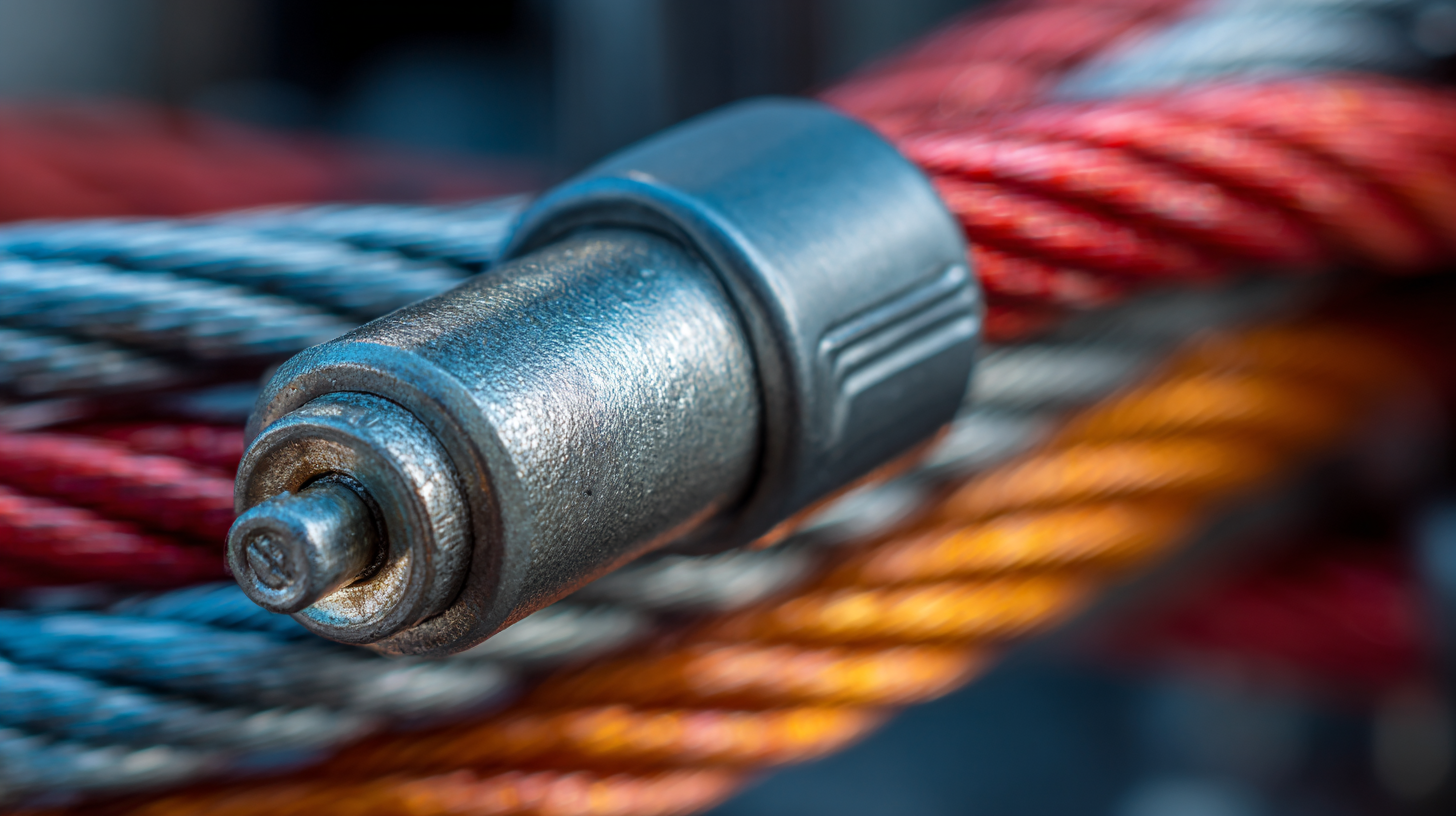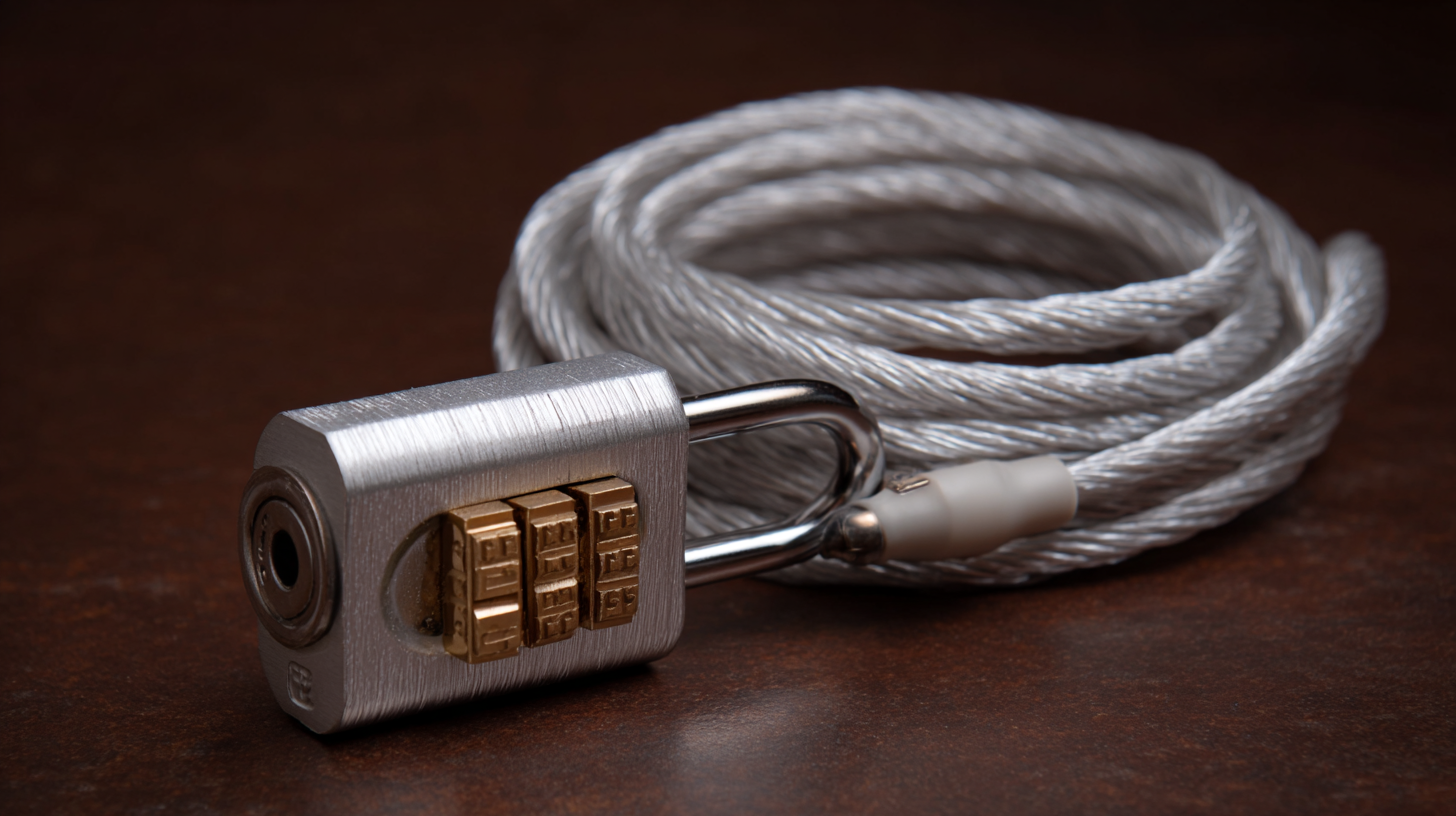-
Phone
-
E-mail
-
Whatsapp
-
WeChat

Leave Your Message

When it comes to securing your belongings, choosing the right Lock Cable Lock can make all the difference. In a world where theft and damage are common concerns, the importance of selecting a reliable locking solution cannot be overstated. This comprehensive guide aims to equip you with the essential knowledge needed to make an informed decision when purchasing a Lock Cable Lock. We'll delve into various types of cable locks available on the market, assessing their strengths and weaknesses based on industry insights.
Understanding the diverse range of options is crucial, as each type of Lock Cable Lock offers unique features tailored to different needs. Whether you're looking to secure a bicycle, tools, or other valuables, knowing the specifications and design aspects will empower you to choose the most effective lock. Additionally, we will address key factors to consider, such as durability, flexibility, and security ratings, ensuring that your final choice provides optimal protection.
By the end of this guide, you will possess a well-rounded perspective on the Lock Cable Lock options available, allowing you to confidently select a product that meets your security requirements without compromising on quality. Join us as we explore the top choices and what to keep in mind to safeguard your belongings effectively.

When selecting a cable lock for your security needs in 2025, several key factors must be considered to ensure optimal protection. According to a recent data report from the Security Industry Association, the global demand for personal security devices, including cable locks, is projected to grow by 8.5% annually through 2025. This growth places a heightened emphasis on the importance of durability and theft prevention features in cable locks.

When choosing a cable lock, prioritize the material quality; locks made from hardened steel or stainless steel tend to offer superior resistance against cutting and sawing. A lock with a thicker cable diameter, preferably 10mm or more, is advisable, as it significantly increases resistance to theft. Additionally, look for locks that offer tamper-proof mechanisms since 70% of thefts are committed by opportunistic criminals looking for easy targets, as noted in the Annual Crime Report by the National Institute of Justice.
Tips: Ensure that the lock has a secure locking mechanism and consider a lock with a built-in alarm system, which can deter thieves effectively. Always use your cable lock to secure both the frame and the wheels of your bike, as a comprehensive approach increases overall security.
When selecting a cable lock, understanding the importance of lock strength is paramount. A lock’s durability is primarily determined by the materials used in its construction. High-quality steel is often the standard for many cable locks, providing excellent resistance against cutting and breaking. Shock resistance and flexibility are also key factors to consider; look for locks that incorporate reinforced materials, such as braided steel or a tough coating, to enhance their ability to withstand physical attacks.
Tips for Choosing Stronger Locks: Always check for certifications like Sold Secure or ASTM ratings, which indicate a lock’s performance under independent testing. Additionally, prioritize locks with thicker cable diameters, as these typically offer greater resistance to cutting tools. Don’t forget to evaluate the locking mechanism itself, as a robust cylinder or disc lock can significantly improve security against picking.
In addition to material and design, the overall resistance of a cable lock to environmental factors can also impact its longevity and effectiveness. A lock that features rust-resistant coatings can perform better in inclement weather, ensuring that it remains a trustworthy option throughout its lifespan. Make sure to choose a cable lock that not only meets your security needs but also can withstand the elements, providing peace of mind no matter where you are.
When choosing a cable lock, evaluating the cable length is crucial to achieve a balance between security and usability. A longer cable provides versatility in securing various items and can accommodate different locking scenarios. However, it may also result in increased weight and reduced portability. On the other hand, a shorter cable lock might be easier to carry but could limit your locking options. Therefore, consider the items you plan to secure and the locations where you'll be using the lock.
**Tips:** Always measure the dimensions of your equipment and think about how you will use the lock. Opt for a cable length that easily wraps around your gear and any fixed objects while still allowing for secure locking. A good rule of thumb is to choose a cable that is at least 6 feet long for bicycles, ensuring it reaches from the frame to a sturdy post.
Pay attention to the thickness of the cable as well, as this can affect security. Thicker cables are harder to cut but can be less flexible. Striking the right balance in both length and thickness will enhance the effectiveness of your cable lock, providing peace of mind while maintaining ease of use.
When it comes to securing your belongings, the choice between key and combination cable locks can significantly impact your safety. According to a recent report by the Security Industry Association (SIA), around 40% of thefts occur due to inadequate locking mechanisms, highlighting the importance of selecting the right type of lock. Key locks tend to provide a higher level of security due to their mechanical design and unique key patterns, which can be more challenging for thieves to replicate. In fact, studies show that key locks can resist tampering better than combination locks, with a success rate of 85% against lock picking attempts.

On the other hand, combination locks offer distinct advantages in terms of convenience and flexibility. A report from the National Institute of Justice (NIJ) indicates that users prefer combination locks for their ease of use, as they eliminate the need to carry physical keys. While some may argue that combination locks are more vulnerable to being cracked through brute force methods, advancements in technology have led to the development of locks that are both user-friendly and secure. Approximately 70% of consumers now opt for combination locks for everyday use, citing their efficiency and the ability to reset codes easily. Ultimately, understanding the security features and drawbacks of both types is crucial for making an informed decision regarding your security needs.
When choosing the best cable lock in 2025, it's essential to look for trusted brands that have proven their reliability and durability through rigorous testing. Approximately 30% of bike thieves will abandon their attempts if they encounter a high-quality lock. This statistic highlights the importance of investing in a robust locking mechanism that not only secures your bike but also deters potential thieves. Among the top recommendations this year are brands that have undergone extensive evaluations for their design and practical use under various conditions.
Five brands stand out in the cable lock market for 2025. These brands have been assessed for their strength against cutting, pulling, and other common tampering methods, ensuring they meet industry standards. With the increasing prevalence of bike theft, consumers are urged to opt for locks with cutting-edge features such as alarm systems, Bluetooth connectivity, and reinforced materials that are less susceptible to tampering. According to recent data, over 50% of cyclists reported feeling more secure using locks that offer additional safety features, leading to a more carefree biking experience.
| Feature | Brand A | Brand B | Brand C | Brand D | Brand E |
|---|---|---|---|---|---|
| Cable Thickness | 10mm | 9mm | 12mm | 11mm | 8mm |
| Lock Type | Key | Combination | Key | Key | Combination |
| Weight | 1.2 kg | 1.0 kg | 1.5 kg | 1.3 kg | 0.9 kg |
| Security Rating | 12/15 | 10/15 | 15/15 | 13/15 | 9/15 |
| Price Range | $25 - $35 | $20 - $30 | $30 - $40 | $28 - $38 | $18 - $28 |
